Resources
Resource 1: Singing poetry
By listening to poetry regularly, young students get accustomed to the basic patterns of a language. What is especially useful about poetry in this matter is that it is so easy to store it in one's memory. Small children have to put in no special effort to memorise poetry; just by enjoying it several times and reciting it they make it a part of their permanent collection.
The important question for the teacher is: 'How do I select good poems and where can I find them?' The poems that most primers and textbooks carry are often of a low quality and have little value for the development of language. Similarly, much of the poetry published in Hindi monthly magazines has little worth. Most poems we see in textbooks and magazines are moralistic and dull. They have an artificial sentence structure and vocabulary. They lack the feel of real day-to-day language. This is why they have hardly any value as resources for learning language.
Quite a different kind of poems, are needed for building the foundation of children's reading skills. A selection of such poems in Hindi is given below.
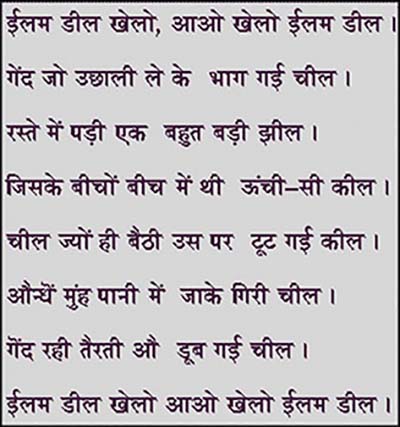

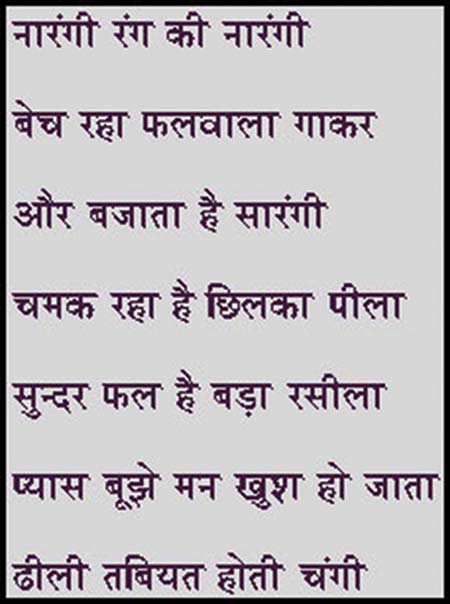
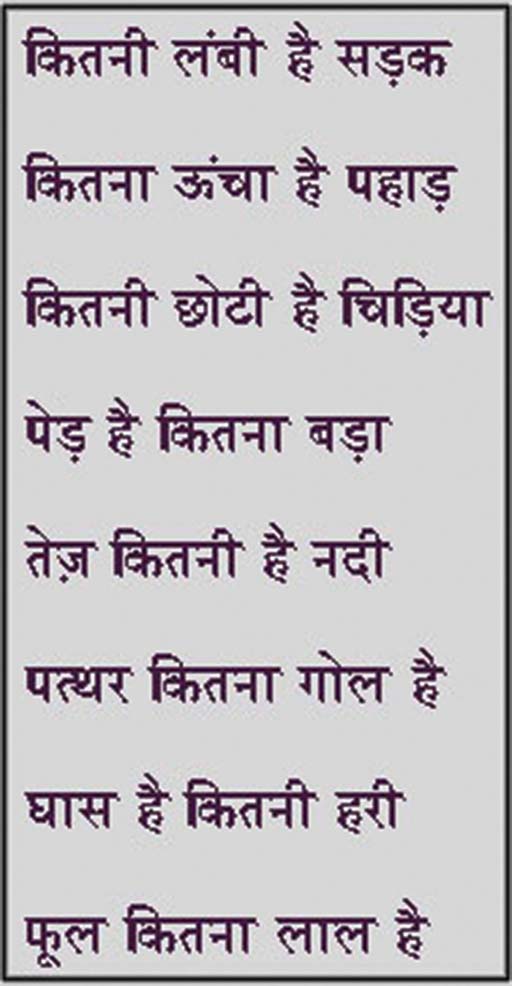
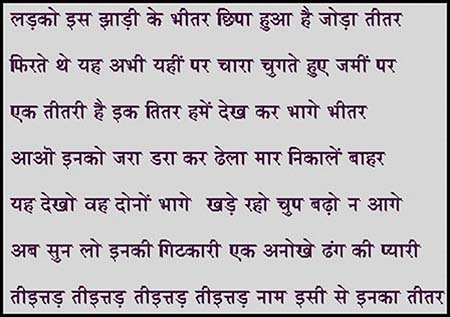
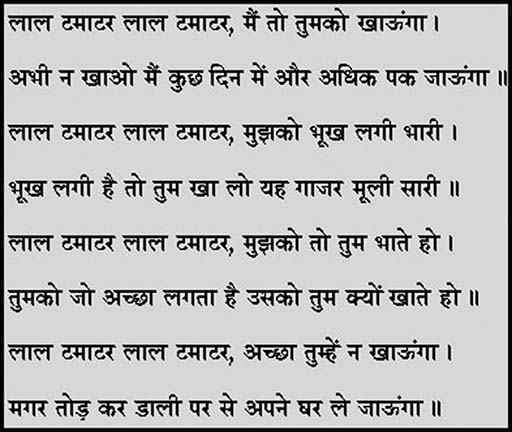
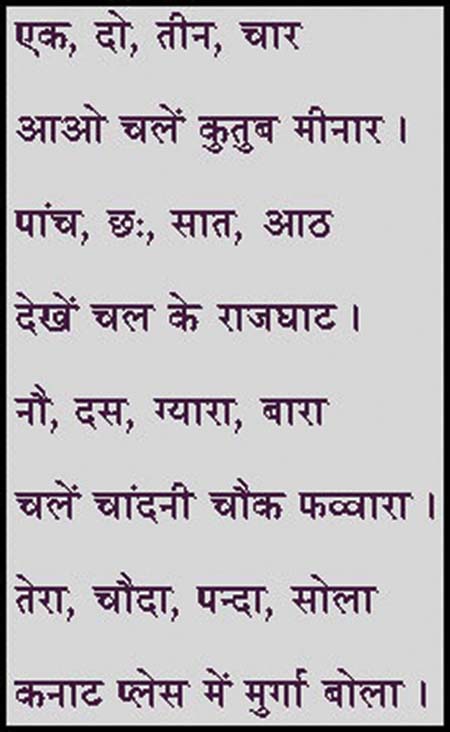

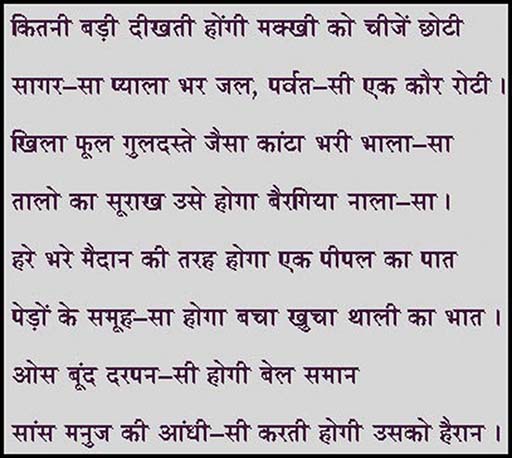

Such poems can surely be found in all Indian languages, but the teachers who want to find them will have to search very carefully. They will need to keep their eyes open for playful and natural use of language. Also, purely didactic poems will have to be left out.
One thing that any teacher can easily do is to write out the songs that students sing while playing certain games, such as while skipping, jumping and playing ball. These are traditional rhymes, and it may be difficult to collect them in cities. However, with some effort, we can make our own collections of such songs. The collection can take the form of one or more little books with a song written neatly on each page, along with a suitable picture which can either be made or cut out from a magazine or some other source. It is not always necessary that the picture should accurately portray what the poem says. If the picture simply evokes a mood or scene that is vaguely associated with the poem, this is fine. You can prepare several books by yourself in this manner, each one of about 16 pages, using ordinary white paper if you cannot afford the slightly more expensive drawing paper. If you use drawing paper, the book will last longer and you won't have to prepare the same book each year.
The way to read poetry books is the same as for other books, that is, sitting with a group of students with the book in the middle. After two or three occasions, you can sing the poem aloud without the book and ask students to sing with you. They will be able to sing the poem from memory quite soon if the poem is of good quality. Later, when you read it again from the book, they will anticipate the words given on the pages. Students of six can happily copy out a whole poem on a separate piece of paper or slate, and if they know it by heart by that time, they will have little difficulty recognising individual words after a few days.
(Adapted from Kumar, 1986.)
5 Summary
